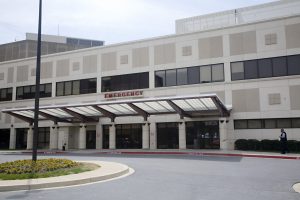
The Johns Hopkins Medicine researchers who founded the digital health company Stocastic thought they had developed an effective artificial intelligence (AI) tool that could assist emergency department (ED) nurses in deciding the best course of action for incoming patients. But it was not until they saw Stocastic’s TriageGO in action in Johns Hopkins EDs a few years ago that they felt validated.
“When you can deploy a technology, then it enables a lot more research to improve clinical decision making,” says Scott Levin, an associate professor of emergency medicine and Stocastic’s co-founder. “You can study the human-technology interaction, determine how clinicians approach different clinical decisions and how variable that thinking can be.”
TriageGO is used as an integral part of the triage process in EDs at The Johns Hopkins Hospital, Johns Hopkins Bayview Medical Center and Howard County General Hospital, which combined see almost 200,000 visits annually. Earlier this month, the technology — and Stocastic — was acquired by Beckman Coulter. The deal was part of the evolution of a two-year working relationship between the companies, according to Levin. When Beckman Coulter expressed interested in further supporting Stocastic’s work, Levin says, the startup’s leaders realized being acquired would give them additional expertise and resources to accelerate and expand their mission.
“It’s a dream scenario,” he says. “Our whole team will continue working for Beckman Coulter on TriageGO, but also on other decision-support products Beckman Coulter is developing for the emergency department.”
Christina DeMur, head of the technology development team at Johns Hopkins Technology Ventures (JHTV), says the biggest challenge for many digital and software technology companies is being able to demonstrate the real-world applicability of their technology. Stocastic, she says, not only had the data but took advantage of the resources available at Johns Hopkins.
“What Johns Hopkins brings to bear is deep, deep domain knowledge on the clinical side but also deep, deep experience on the research side,” says DeMur, who has worked with Stocastic. “A ton of digital health care companies are struggling with measuring their technology’s impact and outcomes. This is where Johns Hopkins startups should have an advantage.”
ED resources throughout the country are “extremely strained,” says Gabe Kelen, director of the Department of Emergency Medicine at Johns Hopkins. Not efficiently moving patients in EDs can create challenges for all patients: those who are very sick are forced to wait longer, increasing morbidity and mortality rates across many conditions; patients who are lower risk spend unnecessary time at the hospital and potentially use resources that could go to those who are more high risk.
“This is all about patient safety, and this system tremendously improves patient safety,” says Kelen.
Incoming patients in the ED typically are evaluated by nurses and assigned a number from one (the sickest) to five (the least sick) that determines the path of care. But the evaluation is subjective, with two nurses evaluating the same patient sometimes disagreeing, according to Levin, a director of Johns Hopkins’ Center for Data Science in Emergency Medicine.
“What we’ve done is help the nurses confidently identify a larger group of those low risk patients,” Levin says. “When you do that, those people go on more efficient patient care pathways and get out of the ED sooner, creating improved patient flow.”
TriageGO is integrated into a patient’s digital health record. A nurse ask a patient for information about their condition and takes vital signs. The data, combined with the patient’s health care history, is run through Stocastic’s AI algorithm to predict the patient’s risk of several acute outcomes and to recommend a triage level of care, along with an explanation for the decision — all in a matter of seconds. The nurse then assigns the triage level.
“We’ve been able to show that the nurse with the tool is better than the nurse alone or the tool alone,” he says.
Levin founded Stocastic in 2017 with Eric Hamrock, who was then working as a health care administrator at Howard County General Hospital before leaving to work for Stocastic full-time. Jeremiah Hinson, an associate professor of emergency medicine at Johns Hopkins and a director of the Center for Data Science in Emergency Medicine, is Stocastic’s chief medical officer. The team participated in the I-Corps program through JHTV, which Levin praised as the “trigger” for the startup.
“That gave us the idea that there was value in commercializing some of the work we were doing, largely because it’s the only way that we could have a bigger impact outside of academia,” he says.
Kelen says he was interested in trying TriageGO at Johns Hopkins because he has “always been intrigued by computer-assisted algorithms from an efficiency point of view, especially if it results in better outcomes.”
“I loved it from the start as an idea and then was even more enthusiastic when it worked,” he says.
Since using the system at Johns Hopkins, Kelen has noticed anecdotally that it is rare for doctors to need to treat a patient who has collapsed or suddenly deteriorated in the ED.
TriageGo will be used at Sibley Memorial Hospital starting this month. The system is also used in hospitals in Florida and Connecticut, and it soon will be in use at several hospitals in Missouri.